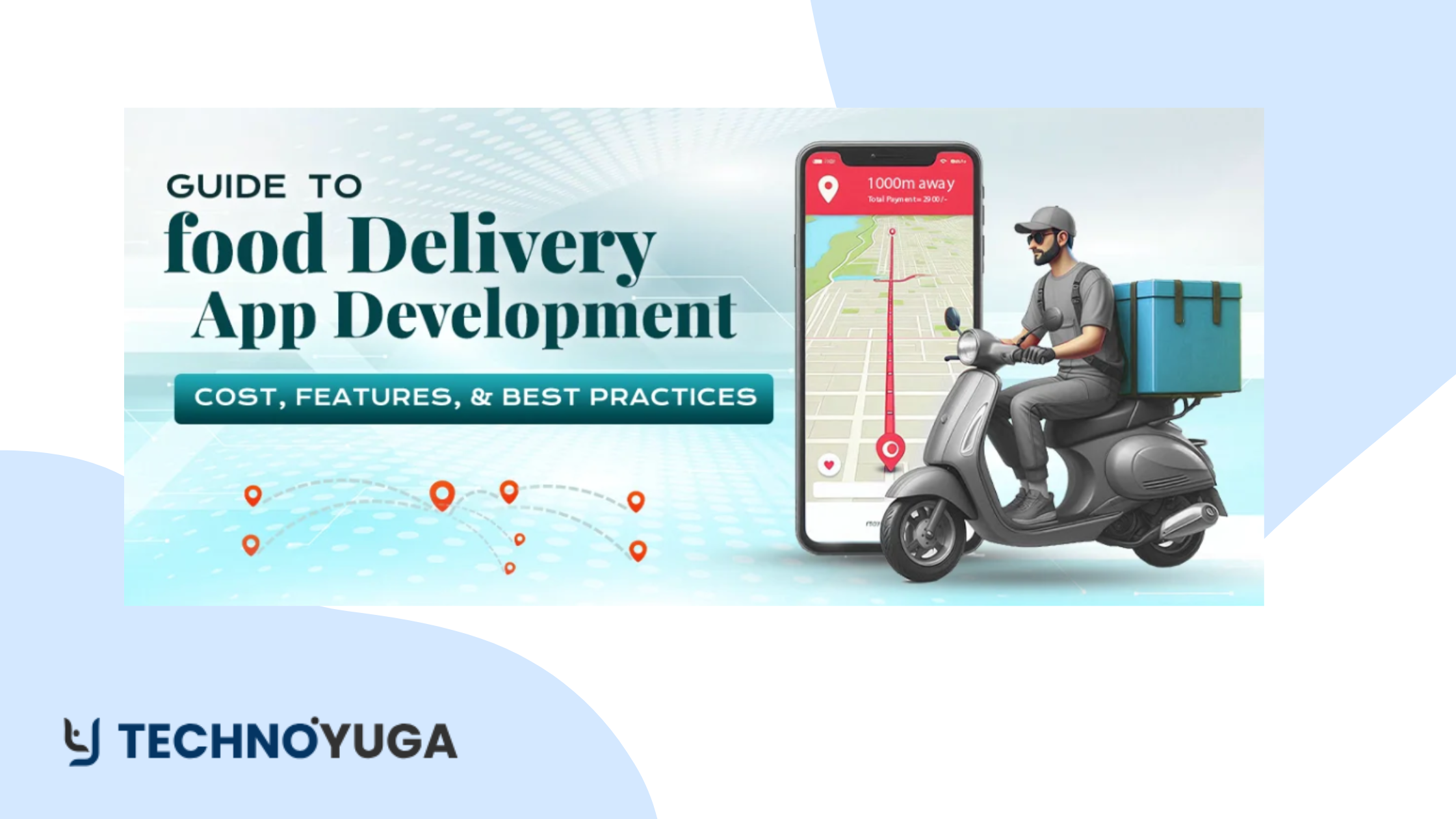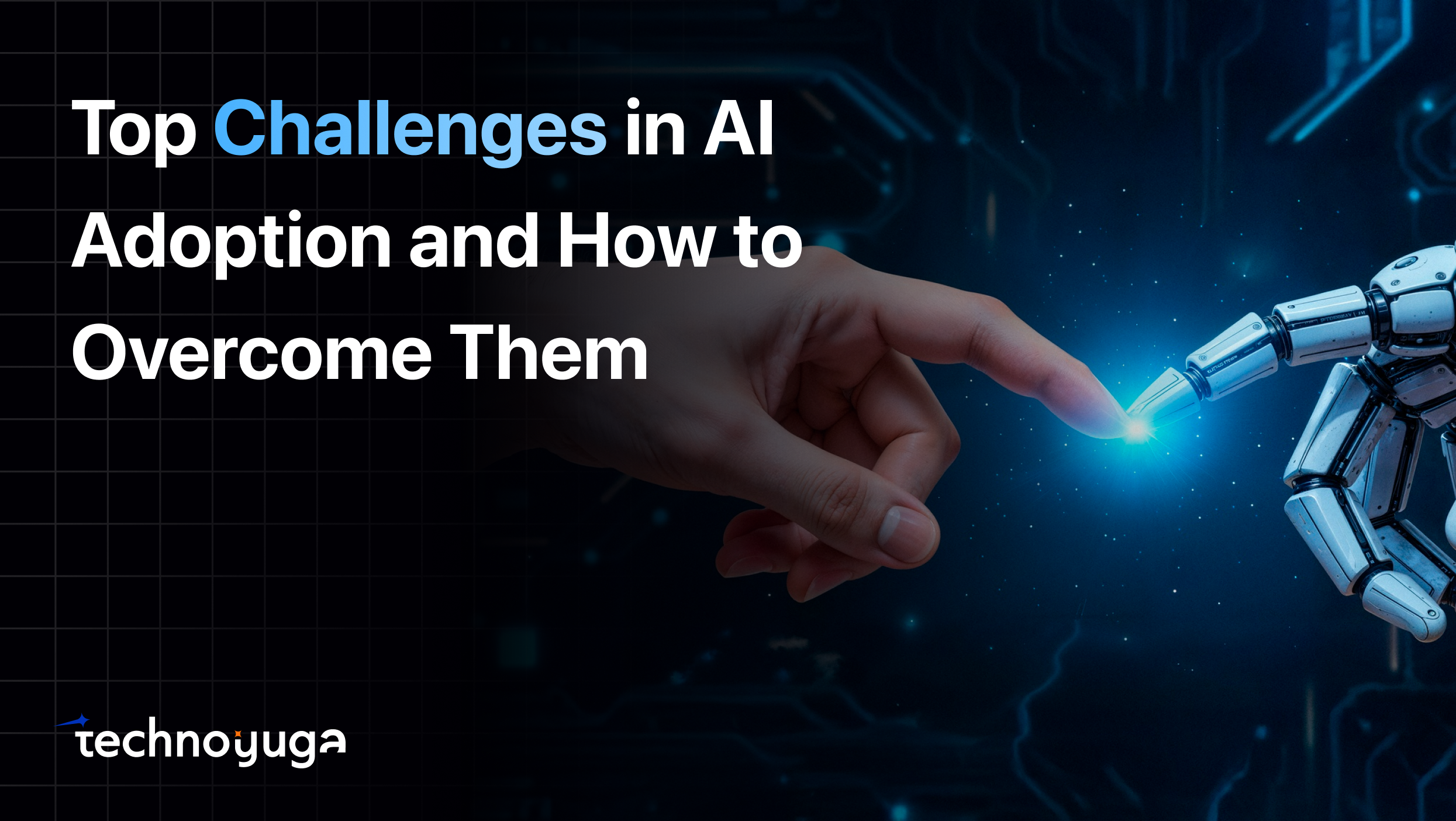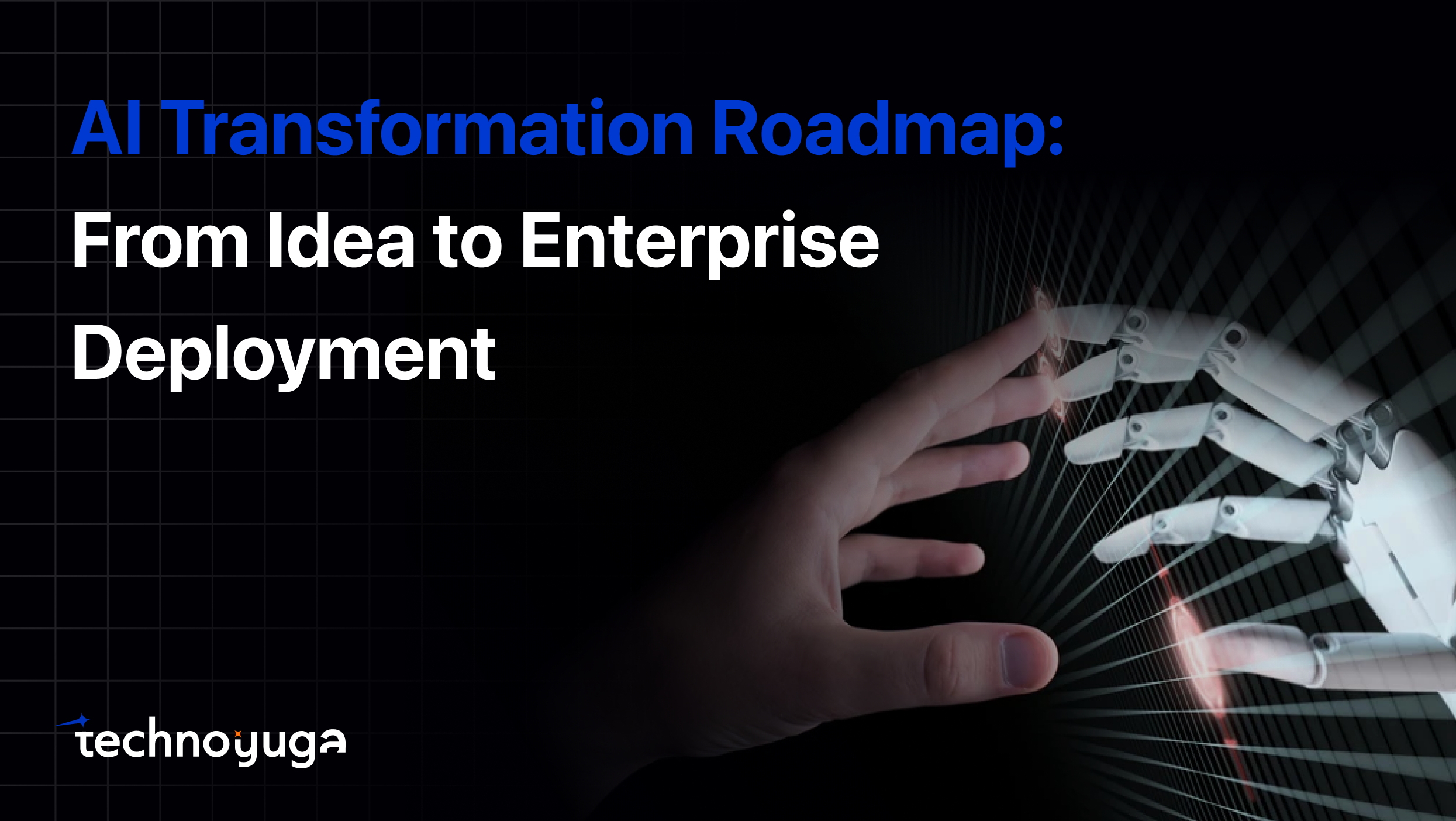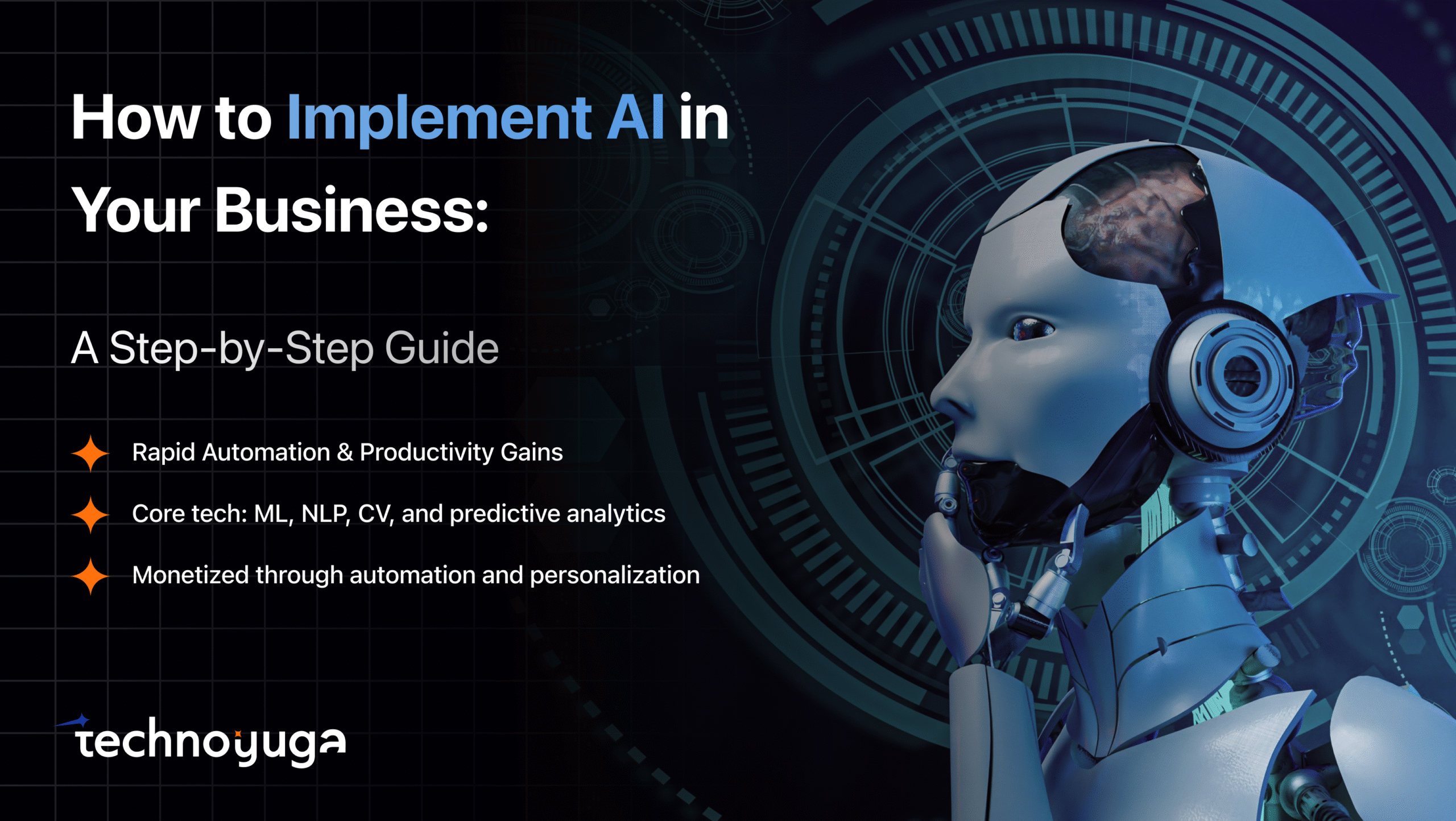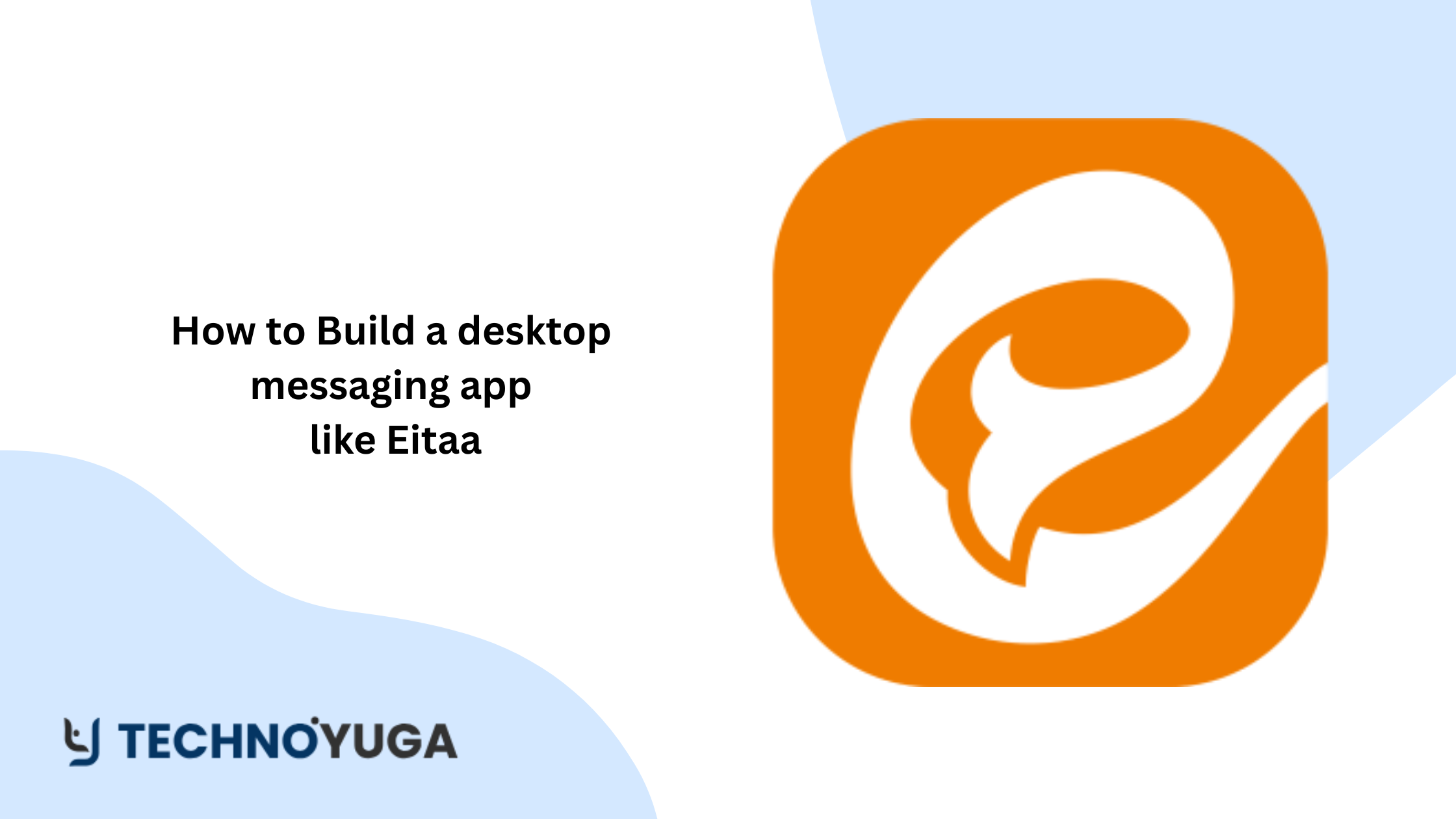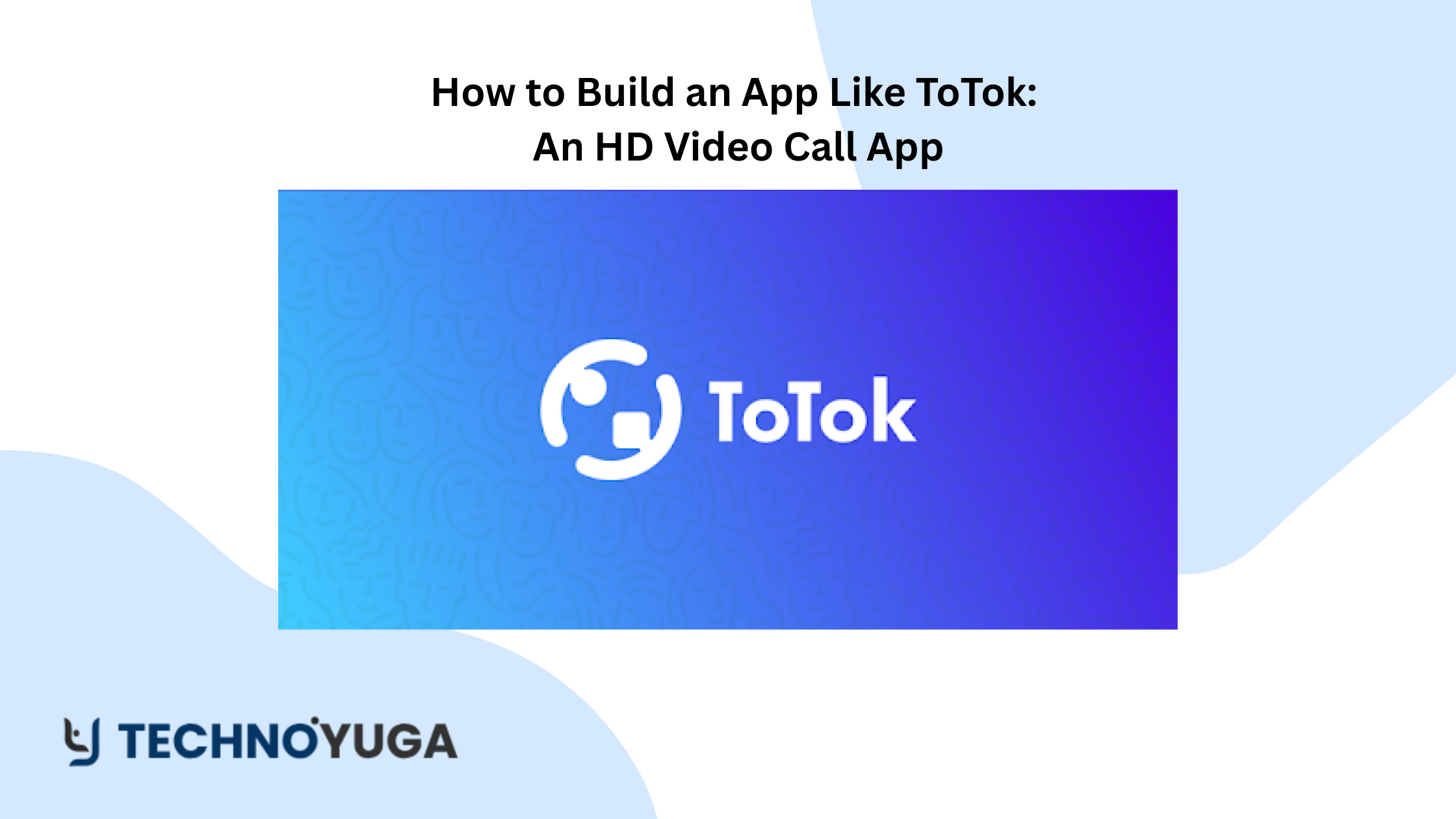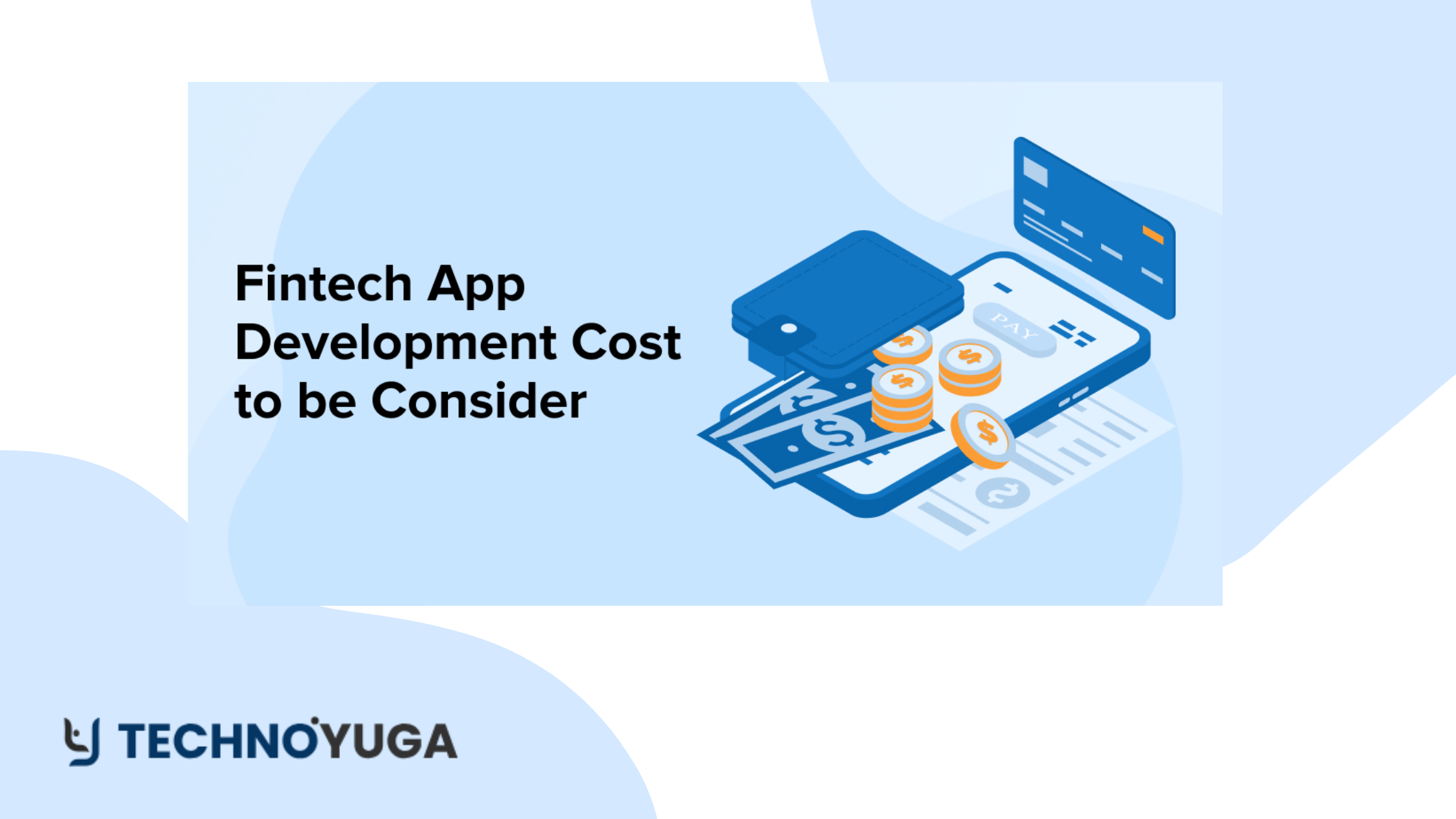Introduction
The demand for food delivery services continues to surge in 2025, making it a prime time for entrepreneurs and businesses to invest in mobile app solutions. Whether you’re planning to launch a new startup or expand your restaurant business online, understanding the food delivery app development cost is essential to making informed financial decisions. From determining the average cost to develop a food delivery app to evaluating region-wise food delivery app development rates, several factors shape your total budget.
Many businesses often ask, “How much does it cost to build a food delivery app?” or “What’s the real food delivery app development price in 2025?” The answer depends on your app’s complexity, platform (Android or iOS), features, and the on demand app development company you partner with.
Whether you’re looking to build a food delivery app from scratch or prefer custom food delivery app development, the choice between basic and advanced features significantly influences your investment. A reliable food delivery app development company can help you navigate this process by offering scalable solutions and clear insights into the food delivery app development cost breakdown.
With mobile technology advancing rapidly, choosing the right mobile app development strategy—be it android app development, iPhone app development, or both—is crucial. To get the most value, many businesses hire dedicated developers from offshore teams that specialize in cost-effective and quality-driven mobile app development.
In this blog, we’ll cover everything you need to know about food delivery app development, including the average cost to develop a food delivery app, pricing models, region-wise development rates, and smart ways to optimize your mobile app development cost in 2025.
Key Factors That Affect Food Delivery App Development Cost
- App Complexity and Features
The overall complexity of a food delivery app is one of the biggest cost influencers. A basic app with limited features like login, menu browsing, and order placement will be far more affordable than one packed with advanced tools like AI-based recommendations, real-time GPS tracking, loyalty programs, or in-app chat. Each additional feature requires extra development time, integration work, and quality assurance, increasing the food delivery app development cost. Apps that support multiple stakeholders—customers, delivery personnel, and restaurant owners—require more robust backend infrastructure, thus further driving up the cost to develop a food delivery app. - Platforms: Android, iOS, or Cross-Platform
Choosing whether to develop for Android, iOS, or both platforms also significantly impacts the food delivery app development price in 2025. Native app development—building separate apps for Android and iOS—requires different codebases, teams, and testing procedures, which doubles the cost. Alternatively, using cross-platform technologies like Flutter or React Native can reduce development time and cost while still delivering a native-like experience. However, this might limit some platform-specific functionalities. Businesses must assess their audience demographics before deciding, as targeting both platforms typically increases the overall mobile app development cost but broadens the market reach. - UI/UX Design Requirements
User experience is vital in retaining customers and ensuring high conversion rates. A well-designed, intuitive UI/UX significantly adds to the cost of building a food delivery app, especially if you opt for custom graphics, animations, and interactive elements. While using standard templates may save costs, it can compromise brand identity and user satisfaction. Investing in UI/UX experts who understand user behavior trends in 2025 ensures your app is both functional and engaging. This upfront investment directly affects customer retention and plays a crucial role in determining the average cost to develop a food delivery app. - Development Team Location and Expertise
The geographical location and expertise of your development team are major determinants of the overall food delivery app development cost. Developers in North America or Western Europe typically charge higher hourly rates ($80–$150/hr), while skilled teams from India, Southeast Asia, or Eastern Europe may offer competitive pricing ($20–$50/hr) without compromising quality. Additionally, hiring a seasoned food delivery app development company or dedicated developers with experience in on demand app development ensures faster delivery and better outcomes, albeit at a premium. Rates vary widely depending on the team’s size, communication skills, and previous portfolio in mobile app development. - Third-Party Integrations
Integrating third-party services like payment gateways (Razorpay, Stripe), mapping (Google Maps, Mapbox), SMS/email notifications, and analytics tools significantly affects the food delivery app development rates. These services often come with their own usage fees, licensing requirements, or technical constraints that add to both initial and ongoing costs. Seamless integration demands time for testing, debugging, and API management, which increases development time and cost. Still, these integrations are crucial for delivering a smooth, functional user experience and cannot be overlooked. As such, they form an integral part of the food delivery app development cost breakdown in 2025. - Backend Infrastructure and Database Management
An efficient backend is the backbone of a successful food delivery app. It manages everything from user authentication, real-time order tracking, payment processing, to restaurant and delivery partner coordination. A robust backend architecture that supports scalability, data security, and real-time updates typically involves more development hours and cloud server resources, thus increasing the food delivery app development cost. Moreover, factors like database choice (SQL vs NoSQL), server type (dedicated vs cloud-based), and integration of microservices affect both development and ongoing maintenance costs. Custom food delivery app development often requires a well-structured backend to support future growth.
Core Features of a Food Delivery App and Their Cost Breakdown
App Complexity and Features
The complexity of your food delivery app directly influences development cost. A basic MVP with essential features like user login, menu browsing, and order tracking is far more affordable than a full-fledged solution with real-time GPS, AI-based suggestions, or multiple integrations. Adding advanced features like live chat, loyalty programs, voi
ce search, or machine learning for personalized recommendations significantly raises the price. The more features you add, the more time and expertise is required, increasing your overall investment. Defining your must-have versus nice-to-have features early helps control the food delivery app development cost and ensures your project stays within budget.
Platform Choice: Android, iOS, or Both
Choosing between Android app development, iPhone app development, or building for both platforms plays a critical role in determining the total food delivery app development price in 2025. Building a native app for each platform ensures better performance and user experience, but it doubles development time and cost. Alternatively, cross-platform frameworks like Flutter or React Native allow code sharing between platforms, reducing development effort. However, depending on the complexity of features and required performance, native development might still be preferred. Your choice should align with your target audience’s device preferences and your available budget.
UI/UX Design Requirements
A seamless and intuitive user experience is critical in food delivery apps. High-quality UI/UX design makes your app more appealing and easier to use, encouraging repeat orders and higher engagement. Custom design with animated interactions, dynamic content, and branded visuals will cost more than using standard templates. The design phase includes wireframing, prototyping, and user testing—each contributing to the overall food delivery app development rates. Investing in good UI/UX design not only boosts usability but also differentiates your app in a competitive market, making it a smart long-term investment despite the higher initial mobile app development cost.
Development Team Location and Expertise
The geographic location of your development team significantly affects cost. Hiring developers from North America or Western Europe generally results in higher expenses due to elevated hourly rates, while working with an offshore food delivery app development company in India or Eastern Europe offers more budget-friendly options without necessarily compromising quality. Additionally, experienced developers may charge more but deliver more efficient and scalable solutions. Choosing to hire dedicated developers with relevant experience in on demand app development can reduce long-term costs, especially when the goal is to build food delivery apps that are future-ready and robust.
Integration with Third-Party Services
Food delivery apps often rely on third-party services such as payment gateways, SMS and email APIs, Google Maps for navigation, and analytics tools. Each integration adds to both development time and cost, depending on the complexity and number of services. Premium APIs or services with usage-based pricing models can also incur ongoing expenses post-launch. Selecting well-documented, scalable APIs helps streamline development and reduce the need for custom solutions. An experienced mobile app development company can help balance between cost and functionality when integrating essential services to ensure your custom food delivery app development stays within your financial limits.
Backend Development and Infrastructure
Backend development powers the core functionality of your food delivery app, including user management, order processing, real-time tracking, and payment handling. The more robust and scalable the backend, the higher the food delivery app development cost. You also need to consider database architecture, server management, and APIs that allow the frontend and backend to communicate. Cloud services such as AWS, Google Cloud, or Azure offer scalable infrastructure but come with ongoing hosting and maintenance fees. A well-built backend ensures performance, security, and the ability to handle peak loads, making it a critical factor in long-term success.
User Registration/Login
This is the first interaction users have with your app and should be seamless. Users typically register via email, phone number, or social media logins. Secure authentication systems such as OTP, two-factor authentication, and encrypted storage of credentials increase development effort. Adding social login features (e.g., Google, Facebook) requires third-party integrations, each with their own setup processes and testing. While it may seem basic, login systems are critical for user data protection, personalized experience, and order history tracking. Expect around 40–60 hours of development time for robust and secure login functionality, contributing significantly to the app’s foundation.
Search and Filter
Efficient search and filtering help users find meals and restaurants quickly. This feature requires a structured database and optimized algorithms to deliver relevant results. Filters may include cuisine type, dietary preference, rating, delivery time, and price range. A well-designed search mechanism may also include auto-suggestions and error tolerance for misspelled entries. Developers may use Elasticsearch or similar technologies to improve performance, especially for apps with a large number of listings. This component is essential to improving usability and satisfaction and typically requires 50–80 hours of development, depending on the level of complexity and number of filters.
Menu Browsing
Menu browsing involves displaying categories, food items, pricing, customization options (e.g., toppings, size), and images. This feature is tied to the backend for real-time updates and stock management. Users expect a smooth UI where they can scroll, expand sections, and read item descriptions. Advanced browsing experiences include visual highlights for popular items, AI-driven suggestions, and dietary indicators. Mobile responsiveness and fast loading are essential for keeping bounce rates low. The development time ranges from 40 to 70 hours, depending on design complexity, data structure, and interactive elements added to improve the food browsing experience.
Cart and Checkout
This feature includes adding items to the cart, modifying quantity, applying coupons, selecting delivery addresses, and proceeding to payment. It involves backend logic to manage stock, calculate total prices (with taxes and fees), and enforce any minimum order requirements. A good UX is critical—users should be able to edit orders easily and checkout without confusion. Checkout also involves integration with address management and payment APIs. Developers spend roughly 60–90 hours creating a frictionless cart and checkout system. It’s a vital conversion point, and investing in a smooth flow here greatly impacts order completion rates.
Order Tracking
Order tracking allows users to monitor the real-time status of their delivery—from preparation to dispatch to doorstep arrival. It requires GPS tracking integration, order status updates from the restaurant and delivery partner, and push notifications to keep users informed. Developing this feature means syncing data across multiple user roles, which increases backend and frontend complexity. Map-based interfaces, ETA estimates, and delivery partner location visibility are often included. This feature is time-intensive, requiring around 80–120 hours. It’s a user favorite and essential for building trust and transparency in your mobile food delivery app.
Payment Gateway
Integrating secure and flexible payment options such as credit/debit cards, UPI, digital wallets, and net banking is crucial. This feature must comply with security standards like PCI-DSS. Developers must also handle error messages, refunds, and transaction history. Popular options include Stripe, Razorpay, and PayPal, but each has their own integration documentation and limitations. Multi-currency support or region-based payment methods increase development complexity. Expect to spend 60–100 hours implementing and testing payment systems. The cost varies depending on the number of payment modes offered and how deeply they are integrated into the user experience.
Ratings and Reviews
Allowing users to rate dishes, leave comments, and view feedback helps build trust and improve service quality. This feature involves front-end forms, a moderation system for spam control, and a backend database for storing and displaying reviews. Advanced setups may use algorithms to display verified reviews or prioritize useful ones. Reviews may also be shown alongside menu items, restaurant profiles, or delivery partner feedback. It typically requires 30–50 hours to implement this feature. While it may seem minor, it significantly impacts user decisions and long-term credibility of your food delivery app.
Advanced Features That Add to the Cost
Real-time GPS Tracking
Real-time GPS tracking is a critical feature for modern food delivery apps, allowing customers to track their orders and delivery agents to navigate routes efficiently. This feature requires integration with mapping services like Google Maps or Mapbox, and it adds complexity to the backend infrastructure. Accurate geolocation, estimated time of arrival, live driver location updates, and route optimization algorithms all contribute to a seamless user experience. Implementing real-time tracking demands more development time, advanced APIs, and robust testing, which significantly increases the overall food delivery app development cost. However, it’s essential for enhancing trust and transparency in on-demand delivery.
AI-based Recommendations
Artificial Intelligence enables personalized user experiences through intelligent recommendations based on user preferences, past orders, and browsing behavior. AI-driven recommendation engines analyze data to suggest restaurants, dishes, and deals that are most relevant to individual users. This level of personalization not only improves user engagement but also boosts order frequency and customer satisfaction. Implementing AI requires integration of machine learning algorithms, real-time data analysis, and cloud-based processing, all of which increase food delivery app development rates. While AI is a powerful competitive differentiator, it comes with higher initial development costs and ongoing expenses related to data handling and model training.
Loyalty Programs and Discounts
Adding loyalty programs and dynamic discounting features introduces additional backend logic and database management complexity. These features track user activity, reward points, offer personalized promotions, and encourage customer retention. Developing a flexible rewards system with tiered benefits, expiration logic, referral incentives, and integration with push notifications or emails takes substantial planning and development effort. It also requires secure user profile management and analytics to monitor usage. This increases the food delivery app development price in 2025, especially if integrated with third-party CRM or marketing tools. However, when executed correctly, loyalty programs drive long-term growth and repeat orders.
In-app Chat Support
In-app chat support enables real-time communication between users and support teams or delivery personnel. Implementing a robust chat system involves creating a reliable messaging interface, handling real-time message delivery, enabling media sharing, and ensuring end-to-end encryption for privacy. It may also include chatbots powered by AI for handling frequently asked questions or routing users to the appropriate support agents. Developing and maintaining this system increases both front-end and backend complexity, resulting in a higher cost to develop a food delivery app. Despite the expense, in-app support significantly enhances user satisfaction by resolving issues promptly and building customer trust.
Multiple Payment Methods Including Wallets/UPI
Integrating a variety of payment methods—such as credit/debit cards, UPI, digital wallets, net banking, and even buy-now-pay-later options—adds complexity and raises the overall mobile app development cost. Each payment gateway has its own API, security protocols, compliance requirements, and transaction validation systems that must be integrated and tested thoroughly. Supporting multiple methods also means handling failed transactions gracefully and ensuring a secure and smooth user experience. As fraud prevention and encryption are paramount, developers must adhere to strict security standards. Despite the increased cost, offering multiple payment options is essential in 2025 to meet diverse user preferences.
Voice Search and Accessibility Features
Voice search and accessibility enhancements make your food delivery app more inclusive and easier to use. Voice commands powered by AI and speech recognition APIs allow users to browse, search, and place orders hands-free. Accessibility features such as screen reader compatibility, adjustable font sizes, high-contrast themes, and intuitive navigation improve usability for people with disabilities. Developing these features requires additional design and coding work, testing across different devices, and compliance with global accessibility standards like WCAG. While these additions increase the custom food delivery app development cost, they significantly broaden your user base and align your app with modern usability expectations.
Integration with Wearables or Smart Devices
Enabling your food delivery app to interact with smartwatches, fitness bands, or voice assistants like Alexa and Google Assistant adds futuristic convenience for users. Customers can receive real-time order updates, place repeat orders, or even track deliveries from their wrist or voice-enabled devices. Developing for wearables involves creating lightweight companion apps, syncing data securely, and optimizing notifications for smaller screens. Integration with voice assistants also requires voice interface design, command mapping, and device-specific testing. These advanced capabilities increase the iPhone and Android app development workload, resulting in higher costs. However, they position your app ahead of competitors in terms of innovation and convenience.
Development Cost Estimates in 2025 (Region-Wise)
USA/Canada
In the USA and Canada, the cost to develop a food delivery app is among the highest globally due to premium labor rates, strict compliance requirements, and advanced technology standards. The average development cost can range between $100,000 to $250,000 for a fully-featured solution. This pricing reflects the high-quality deliverables, robust security practices, and detailed user experience expectations. Businesses choosing this region often do so to ensure top-tier performance, scalability, and long-term value, despite the higher upfront investment.
Western Europe
Western Europe, including countries like Germany, the UK, and France, also sees high food delivery app development costs, typically between $80,000 and $200,000. Development agencies here focus heavily on compliance with GDPR, refined UI/UX, and performance testing. The price is justified by quality assurance, regulatory expertise, and strong communication. If you’re targeting a European audience or need local expertise with legal and cultural alignment, Western Europe is a solid choice, albeit more expensive than some offshore regions.
Eastern Europe
Eastern Europe has become a go-to destination for companies seeking a balance between cost and quality. Countries like Ukraine, Poland, and Romania offer highly skilled developers at rates ranging from $40,000 to $100,000. These regions are known for strong technical education, English proficiency, and reliable project management. Businesses benefit from near-Western quality at significantly lower prices. Eastern Europe is ideal for startups and mid-sized businesses looking to optimize food delivery app development cost without sacrificing performance or communication.
India
India remains one of the most cost-effective destinations for food delivery app development in 2025. Development rates here typically fall between $20,000 and $60,000, depending on complexity and features. Indian app development companies offer robust solutions backed by a massive talent pool, flexible engagement models, and proven experience in custom mobile apps. Whether it’s Android app development, iOS apps, or full-stack solutions, India offers a competitive advantage for those wanting quality outcomes on a lean budget.
Southeast Asia
Countries like Vietnam, Indonesia, and the Philippines are emerging as budget-friendly and reliable choices for mobile app development. Food delivery app development cost in this region typically ranges from $25,000 to $70,000. These nations provide a growing pool of tech-savvy developers, improving infrastructure, and competitive pricing. Southeast Asia is ideal for businesses wanting cost-effective solutions with shorter turnaround times. While the industry is still maturing compared to India or Eastern Europe, it offers good value for MVPs and small-scale apps.
Australia
In Australia, app development costs are on par with Western markets, ranging between $80,000 and $180,000 for a standard food delivery app. Australian developers emphasize strong communication, design, and compliance with local business regulations. This region is ideal for businesses targeting Australian or nearby markets who want geographically aligned partners. However, the higher food delivery app development price may not be suitable for startups unless local presence and time-zone convenience are critical to their operational strategy.
Hidden and Ongoing Costs
While most businesses plan for the initial food delivery app development cost, many overlook the hidden and ongoing expenses that follow after launch. These costs are crucial for maintaining performance, user satisfaction, and long-term scalability. Ignoring them can result in downtime, poor user experience, and higher costs down the line.
App Maintenance and Updates
Post-launch maintenance is necessary to fix bugs, improve app stability, and add new features based on user feedback. Regular updates also ensure compatibility with new operating systems and devices. Expect to allocate around 15–25% of your initial development cost annually for maintenance.
Cloud Hosting and Server Costs
Your food delivery app will require cloud services to manage databases, images, APIs, and real-time functionalities like order tracking. Depending on user base size and data usage, hosting can cost anywhere from $100 to $1,000 per month, scaling with growth.
Third-Party Service Charges
Most apps use third-party integrations such as payment gateways (Stripe, Razorpay), map services (Google Maps), SMS/email APIs, and analytics tools. These services typically operate on a pay-per-use or monthly subscription model and can add hundreds to thousands of dollars yearly.
Marketing and Customer Acquisition
Launching the app is just the beginning. You’ll need to invest in digital marketing (SEO, social media, influencer campaigns, app store optimization) to attract and retain users. Initial marketing budgets can range from $2,000 to $10,000 or more depending on the region and competition.
Compliance and Data Security
As privacy regulations tighten globally, complying with laws like GDPR, HIPAA, or PCI-DSS may require additional security infrastructure, legal consultation, and audits. These costs can vary widely but are non-negotiable for apps handling sensitive data like payment and location.
Technical Support and Customer Service
To maintain a good user experience, you’ll need either automated support (chatbots, help centers) or live agents. Support tools and staff salaries should be factored into your recurring monthly expenses, especially during peak hours or high-growth periods.
Cost-Saving Tips for Startups
Developing a food delivery app doesn’t always require a massive budget—especially for startups that make smart decisions early. By adopting strategic approaches, you can significantly reduce your food delivery app development cost without compromising quality or user experience. Here are some practical cost-saving tips:
Start with an MVP (Minimum Viable Product)
Instead of building a full-featured app from day one, launch with core features like user login, menu browsing, cart, payment, and order tracking. This MVP-first approach allows you to test the market, gather user feedback, and gradually invest in enhancements. It lowers initial development costs and shortens your time to market.
Choose Offshore or Hybrid Development Teams
Hiring developers from regions like India or Eastern Europe can reduce your mobile app development cost by up to 60%. These teams offer quality code, strong communication, and flexible engagement models at a fraction of Western rates. Look for a reliable on demand app development company with proven experience in food delivery solutions.
Use Pre-Built Modules and Open-Source Tools
Instead of reinventing the wheel, leverage existing frameworks, APIs, and SDKs for features like payment gateways, push notifications, and chat systems. This drastically reduces development time and cost. Many food delivery app development companies offer white-label or semi-custom solutions that speed up delivery and cut expenses.
Limit Platform Scope Initially
Instead of launching on both iOS and Android, consider starting with a single platform based on your target audience. Once you gain traction and revenue, you can reinvest into cross-platform or native apps for wider coverage. This focused approach helps you control your android app development or iPhone app development expenses.
Hire Dedicated Developers
Working with dedicated developers gives you better control over timelines and deliverables. It’s often more cost-effective than fixed-price models, especially for long-term projects or frequent updates. A food delivery app development company offering dedicated resources can help you scale the team as needed while optimizing costs.
Automate Where Possible
Use automation for processes like order confirmation, delivery tracking, and customer support to reduce human resource costs. Integrating tools like AI chatbots, automated emails, and smart notifications can also improve efficiency and reduce ongoing operational expenses.
Avoid Feature Creep
Adding too many advanced features too soon can inflate your budget and delay launch. Focus on essential functions first and implement extras like AI recommendations, loyalty programs, or voice search in later phases once the core product is stable and profitable.
Conclusion
Building a successful food delivery app in 2025 requires more than just an idea—it demands a strategic understanding of the development process, feature prioritization, and budget planning. The cost to develop a food delivery app varies widely depending on your region, features, and development partner, but careful planning can help you manage expenses without compromising on quality. Whether you’re choosing between iOS, Android, or cross-platform development, or deciding to hire dedicated developers or an on demand app development company, the goal should be to build a scalable, user-centric product. As technology evolves and user expectations rise, investing in the right features and ongoing support will ensure your app remains competitive and profitable in the long run.
FAQs
- How much does it cost to build a food delivery app in 2025?
The average food delivery app development cost in 2025 ranges from $20,000 to $250,000, depending on features, platforms, and the location of your development team. - What factors influence the cost to develop a food delivery app?
Key factors include app complexity, design, chosen platform (Android/iOS), third-party integrations, backend infrastructure, and whether you hire locally or outsource to a food delivery app development company. - Can I reduce mobile app development costs by starting with an MVP?
Yes. Launching a Minimum Viable Product helps you focus on core features first, validate your concept, and reduce upfront investment, allowing gradual feature upgrades. - Is it cheaper to hire dedicated developers or a full-service agency?
Hiring dedicated developers—especially from regions like India or Eastern Europe—is often more cost-effective than engaging a full-service agency, particularly for long-term or agile projects. - What are the ongoing costs after the app is launched?
Expect to pay for app maintenance, hosting, third-party services, customer support, marketing, and regular updates. These recurring expenses are crucial for performance and user satisfaction.
